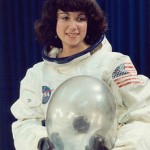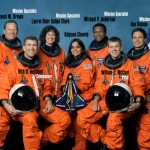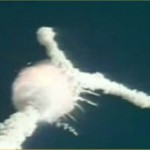Christa Mcauliffe
January 28, 2011 by USA Post · Comments Off on Christa Mcauliffe
 Christa Mcauliffe, (CNN) – Twenty-five years ago today, Concord, New Hampshire, has been abuzz with enthusiasm that the teacher Christa McAuliffe was on the verge of making history.
Christa Mcauliffe, (CNN) – Twenty-five years ago today, Concord, New Hampshire, has been abuzz with enthusiasm that the teacher Christa McAuliffe was on the verge of making history.
Thousands of educators have asked to be the first teacher in space, but NASA chose McAuliffe, a 10th grade social studies teacher at Concord High School.
Micaela Pond, who was 17 years and McAuliffe’s neighbor at the time, remembers getting a return home one-day the teacher turned astronaut.
She still remembers her first laugh when McAuliffe said she wanted to go into space. “How is that possible?” she asked at the time. She remembers thinking: “Women do not go into space, [and] teachers certainly do not go into space.”
On January 28, 1986, the day of launch of the shuttle Challenger, Pond remembers the Concord High School auditorium full of students and media to watch the launch on television.
“We were all wearing party hats and whistles, and we were delighted with our master,” said Pond.
But the party did not last long. Challenger exploded 73 seconds into flight. McAuliffe and six astronauts aboard died.
“There was not a dry eye in the house, and I think the realization hit us pretty quickly,” it’s not good. “Pond recalled in a calm voice.
Merrimack resident Holly Cirillo, 33, was in third grade class from Barbara McNutt Thorton Ferry Elementary School and about 8 years old when the Challenger exploded.
She had gathered with his classmates and children from another class, who sat on their desktop computers while watching television at the front of the room. Cirillo said there was “a lot of preparation time leading up to it,” the program was heavy with details on the New Hampshire astronaut, Christa McAuliffe teacher and space exploration.
“It was really built with us,” she said. “I do not remember all the details, but we learned all about space and what it (McAuliffe) would do there.”
But when the shuttle exploded, the excitement changed to a stunned silence and confusion.
“There was a big sigh, and everyone was silent,” said Cirillo. “We had no idea what it was. Some children thought it happens, they lose pieces of the shuttle. We looked long before teachers close to the TV. Everyone was stunned. Nobody expected this. ”
Cirillo said the teacher in the class “did not know what to say” and did not know how to manage a classroom of third shock. She said she remembers the teacher cry, the comings and goings between the different classrooms and possibly try to change the subject.
Similar confusion is spent inside Room 16 at the Amherst Middle School that day.
“It was disbelief,” said Sam Giarrusso, the science teacher in seventh year that followed the launch on television with his students. “It was a great event, a professor of New Hampshire, and what happened? It was like 9 / 11. You watch and you start to see and ask, ‘what’s happening? What does this mean? ”
Giarruso, who has taught at Amherst College East for 33 years, said there was little discussion in class afterwards.
“From the perspective of a child, it is difficult to relate,” he said.
But Giarrusso said he remembers everything.
“We saw it happen,” he said.
So does Anthony DeMarco, a social studies teacher who watched the Challenger launch seventh school students Arc East on January 28, 1986. He said some children had been Christa McAuliffe, where she teaches.
“It was really devastating,” said DeMarco, who is now the leading Milford Middle School. “There was great hope and excitement around the first teacher in space. It was an incredible situation. At first, the children said, ‘what’s happening? “
Challenger Disaster
January 28, 2011 by USA Post · Comments Off on Challenger Disaster
 Challenger Disaster, President Ronald Reagan was due to give his State of the Union address the night of the Challenger disaster in 1986.
Challenger Disaster, President Ronald Reagan was due to give his State of the Union address the night of the Challenger disaster in 1986.
Instead, it postponed the floor for a week, and on national television to pay tribute to the crew.
He said they were “pioneers”, before concluding his speech with two lines of the poem High Flight John Magee:
“We will never forget them, nor the last time we saw them this morning as they prepared for their trip and said goodbye and” slipped the surly bonds of earth “to” touch the face of God “.
25 years ago today that the Challenger, the transportation of schoolchildren teacher Christa McAuliffe, exploded 73 seconds after liftoff from Cape Canaveral, Florida
Like the Japanese attack on Pearl Harbor was a defining moment in history for another generation of Americans, the Challenger disaster and the images of the shuttle explodes against a bright blue sky on January 27, 1986, will remain engraved in the American collective psyche.
When the shuttle exploded, killing all seven astronauts aboard, a severe blow was dealt the U.S. space program.
Everyone remembers where they were when the Challenger space shuttle exploded in the same way they remember what they were doing when they learned that planes had crashed into the twin towers of the World Trade Center on another morning fateful.
Source: http://www.bbc.co.uk/news/science-environment-12298521
Challenger Explosion
January 28, 2011 by USA Post · Comments Off on Challenger Explosion
 Challenger Explosion, McNair was the second African American to fly in space. McNair Scholars Program was established in his honor later in 1986 after the Challenger explosion.
Challenger Explosion, McNair was the second African American to fly in space. McNair Scholars Program was established in his honor later in 1986 after the Challenger explosion.
This is a scholarship financed at national level, which serves first-generation students from low-income families, or students from underrepresented groups as African Americans, Native Americans, and Native Hawiians Hispanics.
Betty Mei, deputy director of the WVU McNair Scholars Program, said the scholarship is open to juniors and seniors on the rise and provides opportunities for research training, GRE test preparation, tutoring and other tools to help McNair Scholars work towards goals in higher education.
The deadline to apply for the scholarship was January 14 and are currently screening applications, “she said. Mei said she encourages students to consider applying for the scholarship to help them achieve their goals of higher education.
Sunny Anand Narayanan, a senior mechanical engineering major in biology and was the recipient of scholarships McNair in 2008. Narayanan said the award McNair helped his education.
“Growing up, I was not in the best financial situation. It was hard to imagine how I would be able to achieve the education of my dreams,” he said.
Ronald McNair received his Ph.D. in physics from the Massachusetts Institute of Technology.
After the Challenger tragedy in 1986, Congress named the new post-baccalaureate Achievement Program for Ronald E. McNair.
“The most important thing that ever happened in the space of events on this flight – the first climber in space,” WVU graduate, Navy fighters and astronaut Jon McBride said.
Jon McBride, astronaut retired NASA, lectures on personal experience and life of the late Challenger crewmember Ronald McNair Thursday at West Virginia University in an event organized by the McNair Scholars Program.
McBride, a native Beckley, West Virginia, was a friend and classmate of McNair during their time at Kennedy Space Center in Florida.
McBride said he was looking at a training session on January 28, 1986, when the Challenger tragedy occurred.
Four members of the Challenger crew were classmates own McBride. McBride said they had been alive today and to discuss with another flight mission, they all agreed without hesitation.
“One thing we discovered that day that we work people too hard,” said McBride.
Provost Michelle Wheatley said she could not remember exactly what she did 25 years ago when the Challenger launched. She was an assistant professor in Florida at the time, and she remembers seeing the launch of some of his colleagues, “she said.
“Of course, more than half the people here tonight are younger than 25 years,” said Wheatley.
The seven-crew members died when Challenger blew up the ship on January 28, 1986, shortly after its launch.
Twenty-five years and a generation later, members and supporters of the U.S. space program remember the seven-crew members who perished aboard the space shuttle Challenger.
Families and NASA officials met in an outdoor memorial at Kennedy Space Center in Florida on Friday morning at a quarter of a century has passed since the shuttle Challenger exploded, killing her crew and cast doubt on what had hitherto seemed a space program tirelessly safely.
After launching at the end of the morning of January 28, 1986, Challenger has been linked for six days in space when it exploded just 73 seconds into its flight.
As the world watched events unfold live on TV, the shuttle exploded in a spectacular fireball careening.
The crew compartment has emerged intact from the explosion to go up by nearly 5 kilometers more before plunging back to Earth in free fall that lasted more than two minutes.
With no parachute, to escape the system or even protective clothing for the crew, all seven on board – including the first teacher and citizen launched into space, Christa McAuliffe – had no hope.
Cmdr. Dick Scobee, pilot Michael Smith, payload specialist Gregory Jarvis and mission specialists Judith Resnik, Ellison Onizuka and Ronald McNair were also killed in the eyes of the world watched incredulously shocked.
Looking back on the events of that day, Canada AM space educator Randy Attwood deplores the prevailing sense of routine in the attitude toward the NASA shuttle flights at the time.
“It’s sad when you look back to know that the engineers were aware of the problem that finally brought down Challenger,” Attwood said in an interview on CTV’s Canada AM on Friday, recalling the combination of weather launch freezing and a rocket booster decay O-ring seal that were eventually blamed for the disaster.
“It reminds us that even if it looks like it’s simple to go into space on the Space Shuttle, it is a risky business.”
Before launching unfortunate Challenger, NASA had flown in space shuttles two dozen times without incident. But this year, delays have been frustrating the objective of the agency’s space shuttle launch times fifteen twelve months.
Instead, after the deadly disaster, the program wound up grounded for over two years.
Seventeen years after the Challenger explosion, almost to the day, seven astronauts died when a piece of fuel tank foam led to Columbia shuttle ripping apart as it descended to Earth at the end of his mission.
Now the shuttle fleet is grounded once again that the struggle of engineers to fix cracking of the fuel tank they fear could lead to catastrophic failure.
The shuttle Discovery is scheduled to launch by the end of February, with Endeavour scheduled to follow in April. Then, Atlantis is scheduled to mark the official end of the shuttle program for 30 years when it is launched into space in late summer.
Although this will result in final flight by NASA no longer a means to launch its own astronauts into orbit, the agency has not yet announced a replacement. Unperturbed, the U.S. president Barack Obama announced last spring that the United States hopes to send humans to Mars and back over the next twenty years.
Canadian Space Program, which has long relied on NASA to-orbit transportation, plans to maintain its own commitments in the area, including the next mission veteran Chris Hadfield, astronaut to serve as commander of the Space Station International for three months in 2013.



